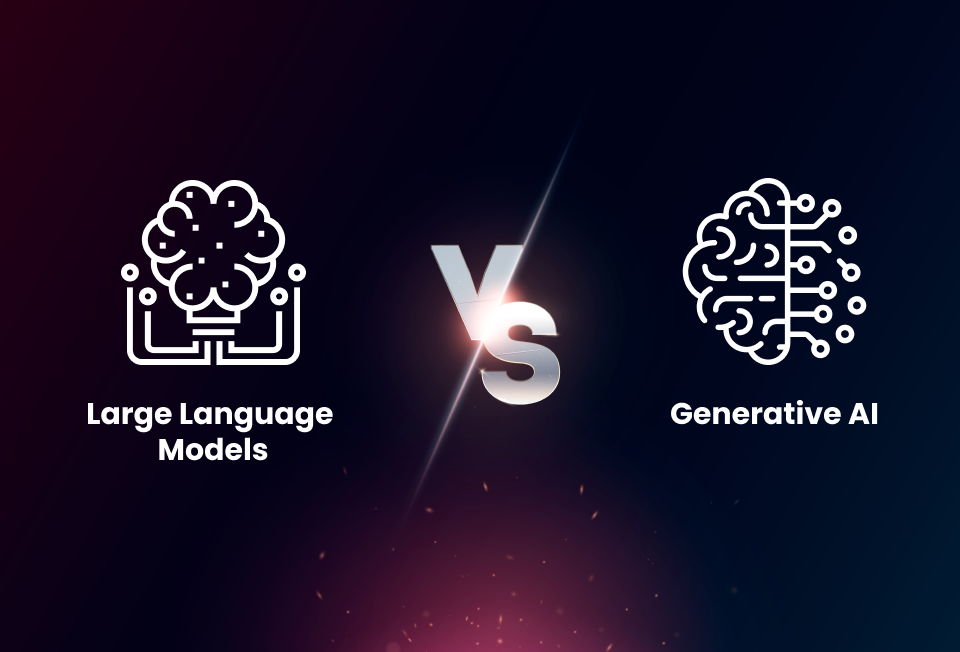Considerations for migrating from a Multidimensional Model to a Tabular Model.
Blogs

Streamlined ADF Pipeline Failure Alerts with Azure Logic Apps
February 8, 2024
Integrating IIS Logs into Apache Druid for Real-Time Analytics
February 14, 2024Considerations for migrating from a Multidimensional Model to a Tabular Model.

- Data Structure:
- Multidimensional Models:
- Organizes data into a cube structure with dimensions, hierarchies, and measures.
- Utilizes concepts like cubes, dimensions, measures, and hierarchies to represent data in a more complex and structured manner.
- Tabular Models:
- Organizes data into tables, similar to relational databases.
- Follows a columnar structure and is more similar to traditional relational database tables.
- Multidimensional Models:
- Performance:
- Multidimensional Models:
- Historically, Multidimensional Models were designed for handling complex queries and large datasets efficiently.
- Can be optimized for aggregations to improve query performance.
- Tabular Models:
- Generally, offers better performance for simple queries and scenarios with smaller datasets.
- May not be as optimized for complex calculations as Multidimensional Models.
- Multidimensional Models:
- Flexibility and Simplicity:
- Multidimensional Models:
- Offers more flexibility in terms of handling complex business logic and calculations.
- Supports advanced features like Key Performance Indicators (KPIs) and MDX (Multidimensional Expressions) language.
- Tabular Models:
- Tends to be simpler and easier to understand, especially for users familiar with relational databases.
- Uses DAX (Data Analysis Expressions) language for calculations, which is often considered more intuitive for users with a background in Excel.
- Multidimensional Models:
- Data Relationships:
- Multidimensional Models:
- Handles relationships between dimensions more explicitly.
- Requires defining relationships between dimensions and measures.
- Tabular Models:
- Utilizes relationships between tables like relational databases, with primary and foreign keys.
- Multidimensional Models:
- Deployment:
- Multidimensional Models:
- Typically deployed as an OLAP (Online Analytical Processing) cube.
- Tabular Models:
- Deployed as a Tabular Models, which can be used for both OLAP and tabular scenarios.
- Multidimensional Models:
- Tool Support:
- Multidimensional Models:
- Historically, Multidimensional Models have been supported by tools like SQL Server Analysis Services (SSAS) Multidimensional.
- Tabular Models:
- Supported by tools like SQL Server Analysis Services (SSAS) Tabular.
- Multidimensional Models:
In summary, the choice between a Multidimensional Models and a Tabular Models depends on factors such as the complexity of the data, the performance requirements, and the familiarity of users with the underlying model structure and languages (MDX for multidimensional, DAX for tabular). The trend in recent years has been towards Tabular Models, but the suitability of each model type depends on the specific requirements of the data analysis and reporting tasks at hand.
While migrating Multidimensional Models to Tabular Models there are certain factors need to be considered from every perspective:
Tables/Dimensions:
In SQL Server Analysis Services (SSAS) Multidimensional Models, the data is stored in a cube structure with multiple dimensions, hierarchies, and measures. In contrast, Tabular Models stores the data in a relational format, organized into tables and columns like a traditional database.
The differences between tables in an SSAS Multidimensional Models and a Tabular Models are:
- Data Organization: In an SSAS Multidimensional Models, data is organized into a cube structure with multiple dimensions, while in a Tabular Models, data is stored in tables and columns.
- Querying: In an SSAS Multidimensional Models, data is queried using MDX (Multidimensional Expressions) queries, while in a Tabular Models, data is queried using DAX (Data Analysis Expressions) queries.
- Processing: In an SSAS Multidimensional Models, processing the cube involves aggregating data across all dimensions and hierarchies, while in a Tabular Models, processing involves loading data into tables and creating relationships between them.
- Performance: SSAS Multidimensional Models are optimized for querying and aggregating large datasets with many dimensions, while Tabular Models are optimized for faster performance on smaller datasets with fewer dimensions.
- Flexibility: Tabular Models are more flexible and easier to maintain compared to Multidimensional Models. It is easier to add new tables, columns, and relationships in a Tabular Models compared to a Multidimensional Models.
Relationships:
In SSAS Multidimensional Models, relationships are defined/created –
- Between dimensions, not tables. Dimensions represent the attributes used to describe the data, while tables are used to store the data. In a Tabular Models, relationships are defined directly between tables.
- Using a snowflake schema, where a dimension is normalized into multiple tables. This is not possible in a Tabular Models.
- Based on multiple keys or attributes, while in a Tabular Models, relationships are based on a single column or attribute.
- Using flexible hierarchies, which allow the user to drill down or roll up data to a specific level of granularity. In a Tabular Models, relationships can be used to define hierarchies, but they are not as flexible as those in a Multidimensional Models.
Measures/Measure groups:
In SQL Server Analysis Services (SSAS) Multidimensional Models Measure Groups are an essential concept and in Tabular Models Measures. The way Measure Groups and Measures are used in these two model’s techniques are different –
- Definition: In an SSAS Multidimensional Models, a measure group is a collection of measures that share the same set of dimensions. In contrast, in a Tabular Models, a measure group is represented by a table that contains the measures and the related dimension columns.
- Aggregations: In an SSAS Multidimensional Models, measure groups are used to define aggregations, which are pre-calculated summaries of the data at different levels of granularity. Aggregations help to improve query performance by reducing the amount of data that needs to be scanned. In a Tabular Models, aggregations are not explicitly defined, as the engine automatically aggregates data at the appropriate level of granularity.
- Relationships: In an SSAS Multidimensional Models, measure groups are related to dimensions using fact relationships, which define how the data in the measure group is related to the dimension. In contrast, in a Tabular Models, measure groups are related to dimensions using regular relationships, which are defined between tables.
- Data Model: In an SSAS Multidimensional Models, the data model is defined using dimensions, hierarchies, and cubes, which contain measure groups. In contrast, in a Tabular Models, the data model is defined using tables, columns, and relationships.
- Query Language: In an SSAS Multidimensional Models, the query language is MDX (Multidimensional Expressions), which is a powerful language for OLAP queries. In contrast, in a Tabular Models, the query language is DAX (Data Analysis Expressions), which is a powerful language for creating calculated columns and measures.
Calculations:
Calculations in SQL Server Analysis Services (SSAS) Multidimensional Models and Tabular Models are used to create custom calculations based on the data in the model. However, there are some key differences between how calculations are defined and used in these two models.
- Definition: In an SSAS Multidimensional Model, calculations are defined using Multidimensional Expressions (MDX), a query language used to interact with multidimensional data. In contrast, in a Tabular Model, calculations are defined using Data Analysis Expressions (DAX), a formula language used to interact with tabular data.
- Flexibility: MDX is a more flexible language than DAX and allows for more complex calculations and data analysis. MDX can handle complex queries involving multiple dimensions, hierarchies, and measures, while DAX is simpler and more limited in scope.
- Performance: MDX calculations can be slower than DAX calculations, especially for large data sets. However, SSAS Multidimensional Models can optimize calculations by pre-aggregating data, which can improve performance. In contrast, Tabular Models rely on in-memory processing, which can also improve performance.
- Usage: Calculations in SSAS Multidimensional Models are primarily used in OLAP applications for advanced analysis and reporting. In contrast, calculations in a Tabular Models are used in Power BI and Excel for data modeling, analysis, and reporting.
- Portability: MDX calculations can be more portable than DAX calculations because MDX is supported by other OLAP systems, such as Oracle Essbase and IBM Cognos. In contrast, DAX is specific to Power BI and Excel, and cannot be used with other OLAP systems.
Hierarchies:
Hierarchies in SQL Server Analysis Services (SSAS) Multidimensional Models and Tabular Models are used to organize data into levels of detail, from the most summarized to the most detailed. However, there are some key differences between how hierarchies are defined and used in these two models. Here are the differences in hierarchies between SSAS Multidimensional Models and Tabular Models:
- Definition: In an SSAS Multidimensional Model, hierarchies are defined within dimensions, which represent the attributes used to describe the data. In contrast, in a Tabular Model, hierarchies are defined directly within tables.
- Flexibility: SSAS Multidimensional Models are more flexible when it comes to defining hierarchies. Hierarchies can be defined as rigid, flexible, or parent-child. A rigid hierarchy has a fixed number of levels and cannot be expanded or contracted. A flexible hierarchy can be expanded or contracted, allowing users to drill up or down the levels of detail. A parent-child hierarchy allows for any number of levels, and each level can have a variable number of members. In a Tabular Models, hierarchies are less flexible and can only be defined as rigid or flexible.
- Performance: Hierarchies in SSAS Multidimensional Models can be optimized for performance by creating aggregations at different levels of detail. In contrast, in a Tabular Models, hierarchies are not directly optimized for performance.
- Usage: Hierarchies in SSAS Multidimensional Models are used primarily for slicing and dicing data in OLAP (online analytical processing) applications. In contrast, hierarchies in a Tabular Models are used primarily for organizing data for use in Power BI and Excel.
Partitions:
Partitions in SQL Server Analysis Services (SSAS) are used to divide a cube or a table into smaller subsets of data to improve processing and query performance. Here are the differences in Partitions between SSAS Multidimensional Models and Tabular Models:
- Definition: In SSAS Multidimensional Models, partitions are defined for each measure group within a cube. Each partition can have its own set of data sources, fact tables, and aggregation settings. In contrast, in a Tabular Models, partitions are defined for each table within the model.
- Aggregation: SSAS Multidimensional Models use aggregations to precalculated and store summarized data for faster query performance. Aggregations are created for each partition and are optimized for the specific data in that partition. In a Tabular Models, aggregations are not used, and all calculations are performed at query time.
- Processing: SSAS Multidimensional Models have more processing options for partitions, including processing options for dimensions, measure groups, and partitions. In contrast, in a Tabular Models, partitions are processed as part of the table processing.
- Flexibility: SSAS Multidimensional Models provide more flexibility when it comes to defining partitions. Each partition can have its own data source, fact table, and aggregation settings, allowing for more precise control over processing and query performance. In a Tabular Models, partitions are less flexible and cannot have their own data sources or aggregation settings.
- Usage: Partitions in SSAS Multidimensional Models are used primarily in OLAP applications to improve query performance, while in a Tabular Models, partitions are used to improve processing times when working with very large tables.
Roles:
Roles in SQL Server Analysis Services (SSAS) Multidimensional Models and Tabular Models are used to restrict access to data based on user permissions. While both models support roles, there are some key differences in how roles are defined and used.
Here are the differences in roles between SSAS Multidimensional Models and Tabular Models:
- Definition: In an SSAS Multidimensional Models, roles are defined at the database level, while in a Tabular Models, roles are defined at the model level.
- Granularity: SSAS Multidimensional Models allow for greater granularity in role definitions. Roles can be defined at the dimension, cube, or cell level, allowing for very precise control over data access. In contrast, Tabular Models only allow roles to be defined at the model or table level.
- Flexibility: SSAS Multidimensional Models offer more flexibility in defining roles. Roles can be defined based on user, group, or role membership, and can be defined using complex MDX (multidimensional expression) expressions. In contrast, roles in a Tabular Models are based on user or group membership and cannot use MDX expressions.
- Performance: SSAS Multidimensional Models can use dynamic security, which allows for faster queries by restricting access to data at the server level. In contrast, Tabular Models do not support dynamic security.
- Usage: Roles in SSAS Multidimensional Models are typically used in OLAP (online analytical processing) applications, while roles in Tabular Models are used primarily for securing access to data in Power BI and Excel.
Priyanka P Amte



